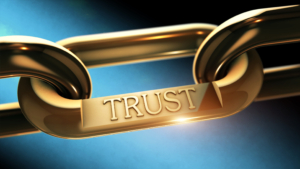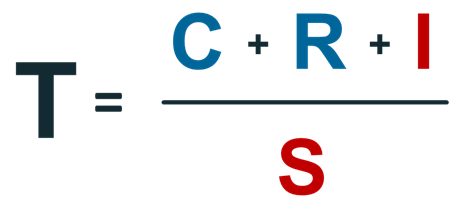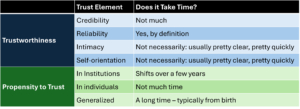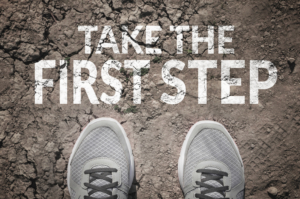Is Trust Taught, or Is Trust Caught?
 There’s no denying that trust is a critical differentiator for success. Companies with high-trust cultures outperform their peers in productivity, innovation, and employee retention. Yet despite significant investments in ethics training and corporate value statements, many organizations struggle to cultivate genuine trust.
There’s no denying that trust is a critical differentiator for success. Companies with high-trust cultures outperform their peers in productivity, innovation, and employee retention. Yet despite significant investments in ethics training and corporate value statements, many organizations struggle to cultivate genuine trust.
The reason is simple: while trust can be taught, it will wither unless it is also caught.
Fifteen years ago, Charles H. Green posted a blog that answers the question, “Can Trust Be Taught?” I wholeheartedly agree with his answer (Yes). And, unlike common business skills like accounting and finance, human skills – values, character traits, and behaviors – are more effectively developed through observation and experience rather than learned through rote instruction.
The Challenge
Trust isn’t built through training programs or marketing promises—though these establish necessary frameworks. Instead, it develops through consistent demonstrations of trustworthy behavior in every interaction, whether with colleagues or clients.
When executives espouse transparency while withholding vital information from teams, employees notice the disconnect. When account managers claim to prioritize client needs but push unnecessary services, the inconsistency erodes confidence. When managers preach work-life balance while sending midnight emails expecting immediate responses, the contradiction undermines trust. When consultants promise quick turnarounds but deliver late, clients notice.
This principle operates powerfully in both directions. Internally, employees observe how leadership responds to challenges, handles mistakes, and treats colleagues at all levels. They catch the organization’s true values through these daily experiences rather than through orientation sessions, annual training or values posters. Externally, clients form trust assessments based on actual experiences: how thoroughly you listen to their needs, how candidly you discuss limitations, and how reliably you follow through on commitments.
This explains why some organizations achieve remarkable trust on both fronts despite minimal formal programs. Companies like Patagonia maintain extraordinary employee engagement and customer loyalty through consistent environmental action rather than elaborate statements. Professional services firms with the highest retention rates—both for talent and clients—often prioritize authentic relationships over rigid processes.
Strengthen Trust
For organizations seeking to strengthen trust, several strategic imperatives emerge:
First, audit the alignment between stated values and actual practices. When both employees and clients observe consistency between what you say and what you do, trust naturally follows. This alignment must extend across all decisions, communications, and interactions.
Second, recognize that trust cascades throughout organizational ecosystems. Team members take cues from leadership behavior and apply similar standards in client relationships. When trustworthiness permeates the organizational culture, it inevitably extends to external partnerships.
Third, understand that trust develops through genuine human connection. In an efficiency-driven environment, it’s tempting to eliminate the informal interactions where trust flourishes. Yet the most successful organizations protect time for authentic relationship building, both among colleagues and with clients.
Fourth, approach trust breaches as opportunities. When mistakes occur—from internal miscommunications to client service failures—the response reveals your true character. Organizations that acknowledge errors promptly, take responsibility without deflection, and make meaningful amends often strengthen relationships beyond their pre-failure state.
Reap the Benefits
The business impact of real trust is substantial. Organizations with strong trust foundations weather crises with minimal disruption, attract and retain top talent, develop deeper client relationships, and require less oversight and formal control mechanisms. While rarely measured directly, the trust advantage appears throughout performance metrics.
As business relationships continue evolving, trustworthiness becomes both more challenging and more differentiating. While trust can’t be manufactured through training programs or relationship management systems alone, organizations that consistently model trustworthiness create environments where trust flourishes naturally, driving sustainable advantage in both talent engagement and client relationships.
Resources to Build Your Trust Skills:
- Join or watch a replay of our free webinars.
- Build trust on your terms through our Self-Paced Online Courses.
- Join the crowd and sign up for one of our Public Virtual Workshops.
- Subscribe to our newsletter.
- Follow us on LinkedIn.
Contact us directly to learn about private workshops

 In today’s fast-paced work environment, multitasking has become a badge of honor. We pride ourselves on juggling multiple projects, responding to emails during meetings, and switching between tasks with lightning speed.
In today’s fast-paced work environment, multitasking has become a badge of honor. We pride ourselves on juggling multiple projects, responding to emails during meetings, and switching between tasks with lightning speed. We often think of establishing trust in business relationships in sales-related roles. For instance, if I have a product or service, I will tell you how my industry knowledge and credentials will make it clear I am the person you should buy from. In short, you can trust me. I know everything there is to know about this product or service. Just ask me!
We often think of establishing trust in business relationships in sales-related roles. For instance, if I have a product or service, I will tell you how my industry knowledge and credentials will make it clear I am the person you should buy from. In short, you can trust me. I know everything there is to know about this product or service. Just ask me! Trust is complicated in many aspects of our daily lives; by comparison, trust in business seems relatively straightforward. Or is it?
Trust is complicated in many aspects of our daily lives; by comparison, trust in business seems relatively straightforward. Or is it?

 MISCONCEPTION 2: TRUST TAKES TIME TO GROW AND IS QICKLY LOST
MISCONCEPTION 2: TRUST TAKES TIME TO GROW AND IS QICKLY LOST
 There are many misconceptions about trust that pervade how we think about professional relationships. While most seem harmless (think about Ronald Reagan’s admonition to trust, but verify), unless they are examined and dispelled, they will impede real trust.
There are many misconceptions about trust that pervade how we think about professional relationships. While most seem harmless (think about Ronald Reagan’s admonition to trust, but verify), unless they are examined and dispelled, they will impede real trust. We’ve all heard it (and may have said it ourselves) many times: “Trust is hard to gain and easy to lose.” Often that statement is followed up with, “And, once it’s gone…” Even without finishing the sentence the implication is clear: once trust is lost, it’s very difficult to get back.
We’ve all heard it (and may have said it ourselves) many times: “Trust is hard to gain and easy to lose.” Often that statement is followed up with, “And, once it’s gone…” Even without finishing the sentence the implication is clear: once trust is lost, it’s very difficult to get back. We recently introduced what we call the (new) 80/20 rule for virtual relationships. In
We recently introduced what we call the (new) 80/20 rule for virtual relationships. In 